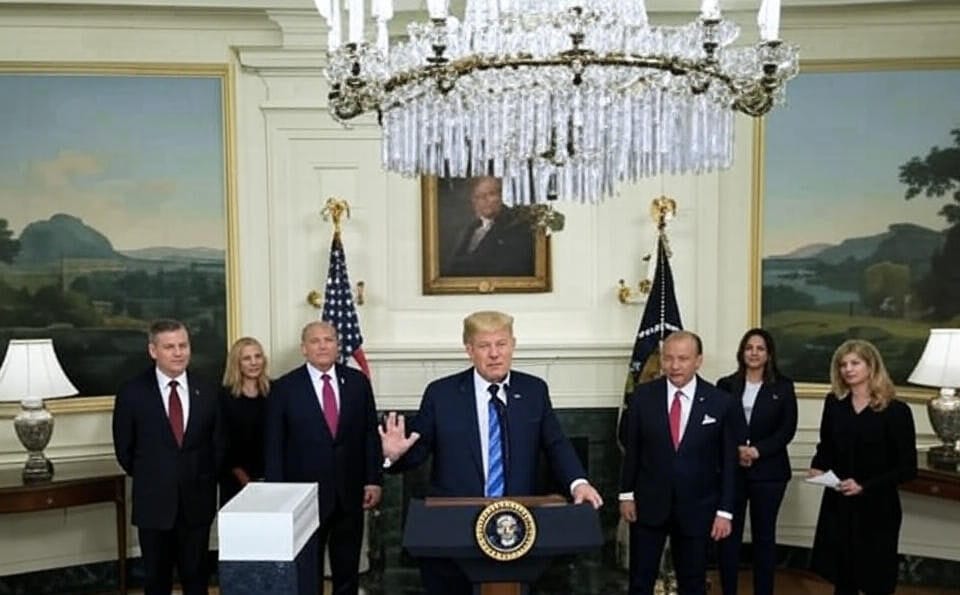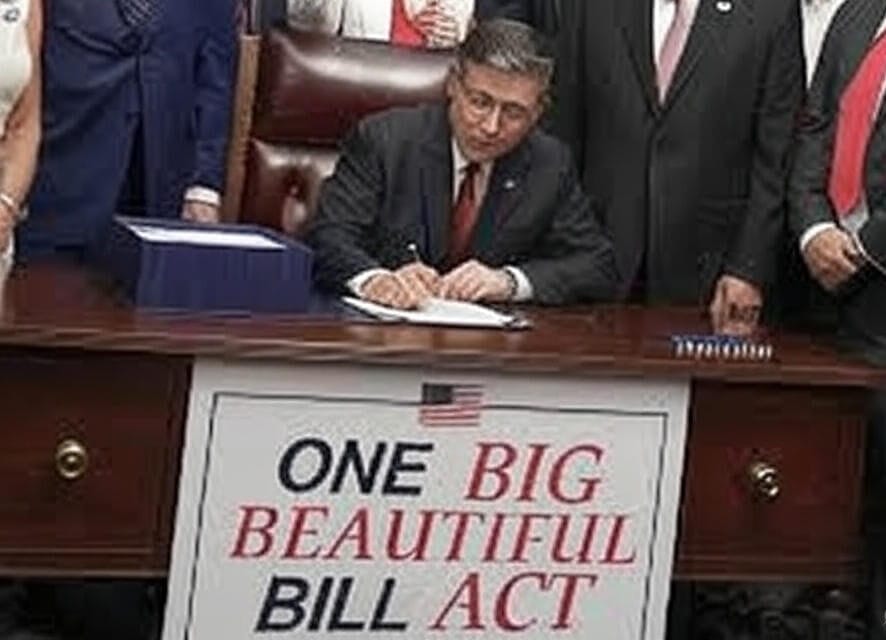
July 5, 2025
On July 4, 2025, President Trump signed into law a multi trillion-dollar legislative package encompassing extensive tax reductions and significant federal spending cuts, marking a pivotal moment in his second term. The ceremony, conducted on the South Lawn of the White House, was attended by senior Republican congressional leaders, including House Speaker Mike Johnson, who presented the President with the gavel used to secure the bill’s passage. This legislation, which garnered near-unanimous support from Republican lawmakers, represents a cornerstone of the administration’s domestic agenda while signaling a transformative shift in U.S. fiscal and foreign policy priorities.
Legislative Overview and Objectives
The newly enacted legislation is designed to advance President Trump’s vision of economic revitalization through a combination of tax relief and fiscal restraint. The tax provisions include substantial reductions in individual and corporate tax rates, with a particular emphasis on lowering obligations for high-income earners and businesses. Administration officials assert that these measures will stimulate private-sector investment, enhance job creation, and foster economic growth amid global economic uncertainties. The spending reductions target a range of federal programs, including select social services, environmental initiatives, and discretionary expenditures, with the stated goal of reducing the federal deficit and promoting fiscal responsibility.
The legislative process was characterized by robust Republican cohesion, with House Speaker Mike Johnson playing a central role in securing near-unanimous party support. Amid the marking ceremony, Speaker Johnson depicted the enactment as a monumental accomplishment in reestablishing financial discipline, emphasizing its arrangement with the administration’s commitment to prioritizing household success.The event, attended by key congressional figures, business leaders, and policy advocates, underscored the Republican Party’s unified support for the President’s agenda.
Foreign Policy Implications

Concurrent with the legislative signing, President Trump issued an executive order to permanently terminate funding for the United States Agency for International Development (USAID), a decision that has reverberated across domestic and international spheres. USAID, established in 1961, has served as a critical instrument of U.S. foreign policy, delivering humanitarian aid, economic development assistance, and disaster relief globally. The administration’s decision to eliminate its funding aligns with President Trump’s stated objective of redirecting resources to domestic priorities, such as infrastructure and national security.
This policy shift has elicited significant concern from international aid organizations, allied governments, and bipartisan congressional figures. Critics argue that the cessation of USAID funding could destabilize vulnerable regions, exacerbate global poverty, and diminish U.S. influence in strategic geopolitical arenas. Democratic leaders have vowed to explore legislative avenues to restore funding or establish alternative mechanisms for international aid. The decision has also prompted discussions within multilateral organizations, including the United Nations, regarding contingency measures to address potential disruptions in global humanitarian efforts.
Economic and Fiscal Implications
The legislation’s economic impact is a subject of considerable debate among analysts and policymakers. Proponents, including Treasury Department officials and conservative economists, contend that the tax reductions will catalyze economic expansion by increasing disposable income and incentivizing corporate investment. They cite historical precedents, such as the tax reforms of the 1980s, as evidence of the potential for supply-side policies to drive sustained growth. The spending cuts, they argue, will contribute to long-term deficit reduction, enhancing the nation’s fiscal stability.
Conversely, critics express apprehension about the legislation’s potential to exacerbate income inequality and strain public services. Preliminary analyses suggest that the tax benefits disproportionately favor high-income individuals and corporations, raising concerns about equitable distribution. Additionally, the spending reductions may limit resources for critical programs, potentially impacting vulnerable populations. The Congressional Budget Office has yet to release a comprehensive assessment, but initial projections indicate that deficit reduction may be modest in the near term, contingent on the realization of anticipated economic growth.
Political Dynamics and Public Response

Politically, the enactment fortifies President Trumps impact inside the Republican Party, uniting his administration as he navigates the early stages of his moment termThe near-unanimous Republican support in Congress reflects the party’s alignment with the administration’s priorities, though it also underscores the deepening partisan divide in Washington. Democratic lawmakers, largely excluded from the legislative process, have criticized the package as prioritizing corporate interests over public welfare. Senate Minority Leader Chuck Schumer described the bill as “an imprudent fiscal strategy that risks long-term economic stability.”
Public sentiment, as reflected in online discourse, remains polarized. Social media platforms indicate strong support among conservative constituencies, who view the legislation as a fulfillment of campaign promises to reduce government expenditure. Conversely, progressive advocates have mobilized to oppose the spending cuts, emphasizing their potential impact on social safety nets. Internationally, the termination of USAID funding has drawn scrutiny from global leaders, with some expressing concern about the implications for U.S. leadership in humanitarian affairs.
Future Considerations
The implementation of this legislation will require meticulous oversight by federal agencies, including the Treasury Department, as they navigate the complexities of executing tax reductions and spending cuts. Legal and administrative challenges are anticipated, particularly regarding the reallocation of resources previously dedicated to affected programs. The end of USAID subsidizing, in the interim, sets the arrange for a broader reevaluation of U.S.foreign policy, with potential ramifications for diplomatic relations and global stability.
The signing of this legislation on Independence Day carried symbolic weight, reflecting the administration’s commitment to a vision of national self-reliance. However, its success will hinge on its ability to deliver measurable economic benefits while addressing concerns about equity and international responsibility. As President Trump seeks to solidify his legacy, the coming months will be critical in determining the efficacy of this transformative policy agenda.





